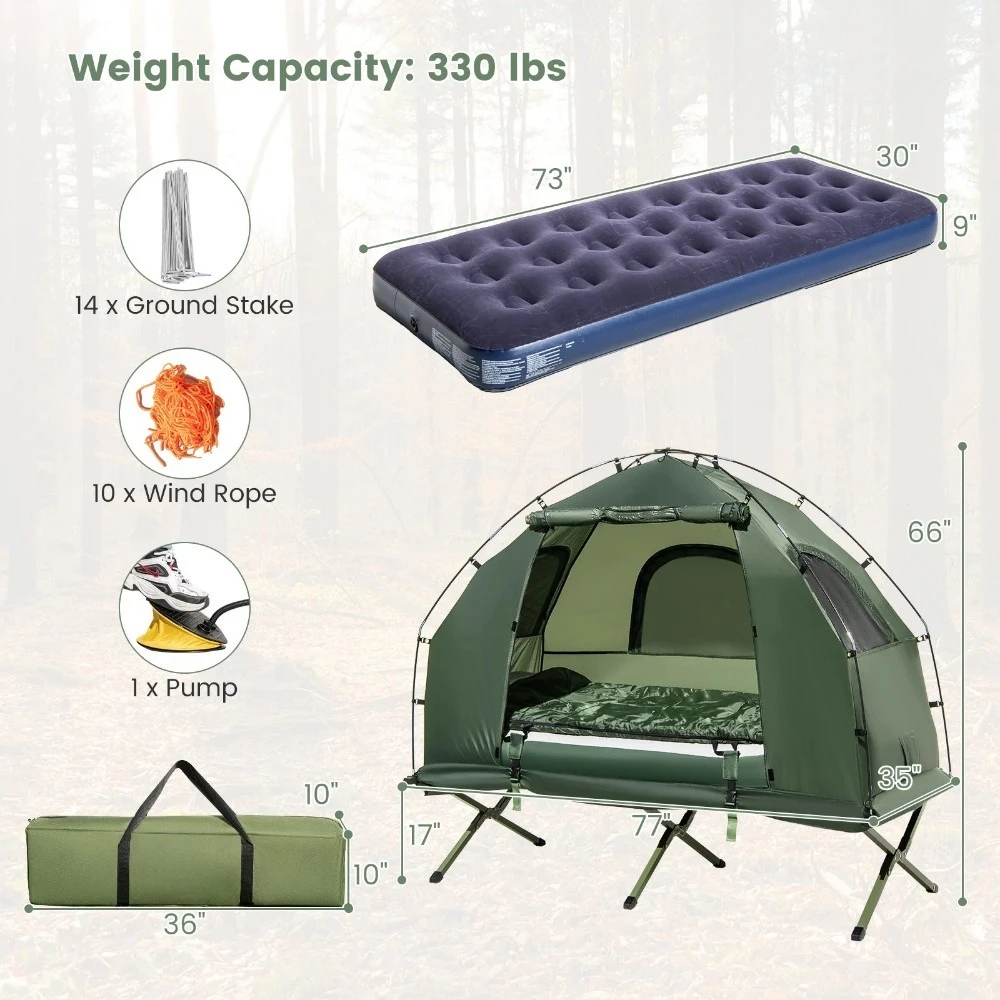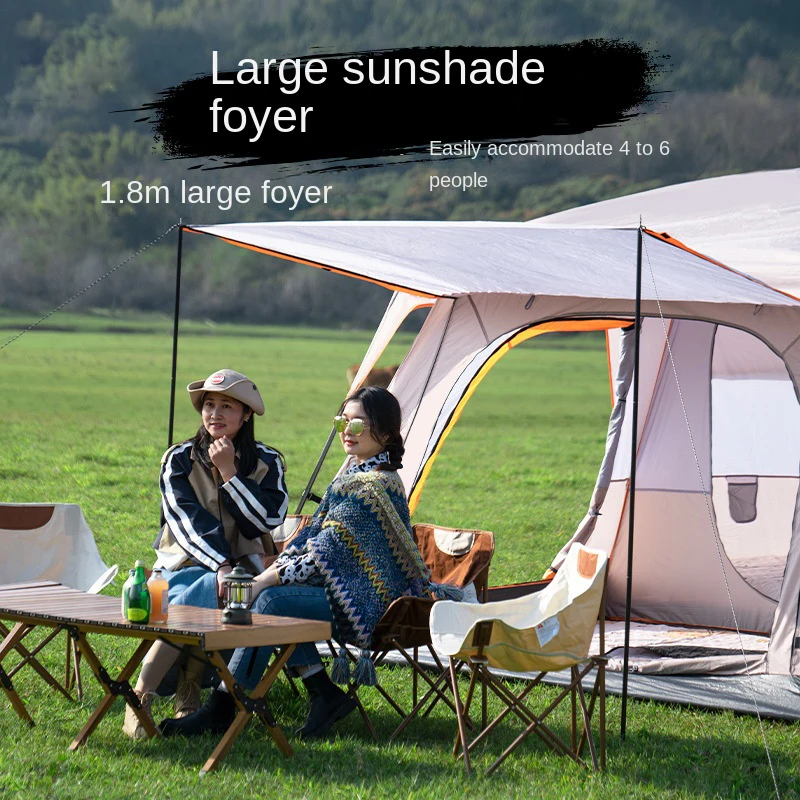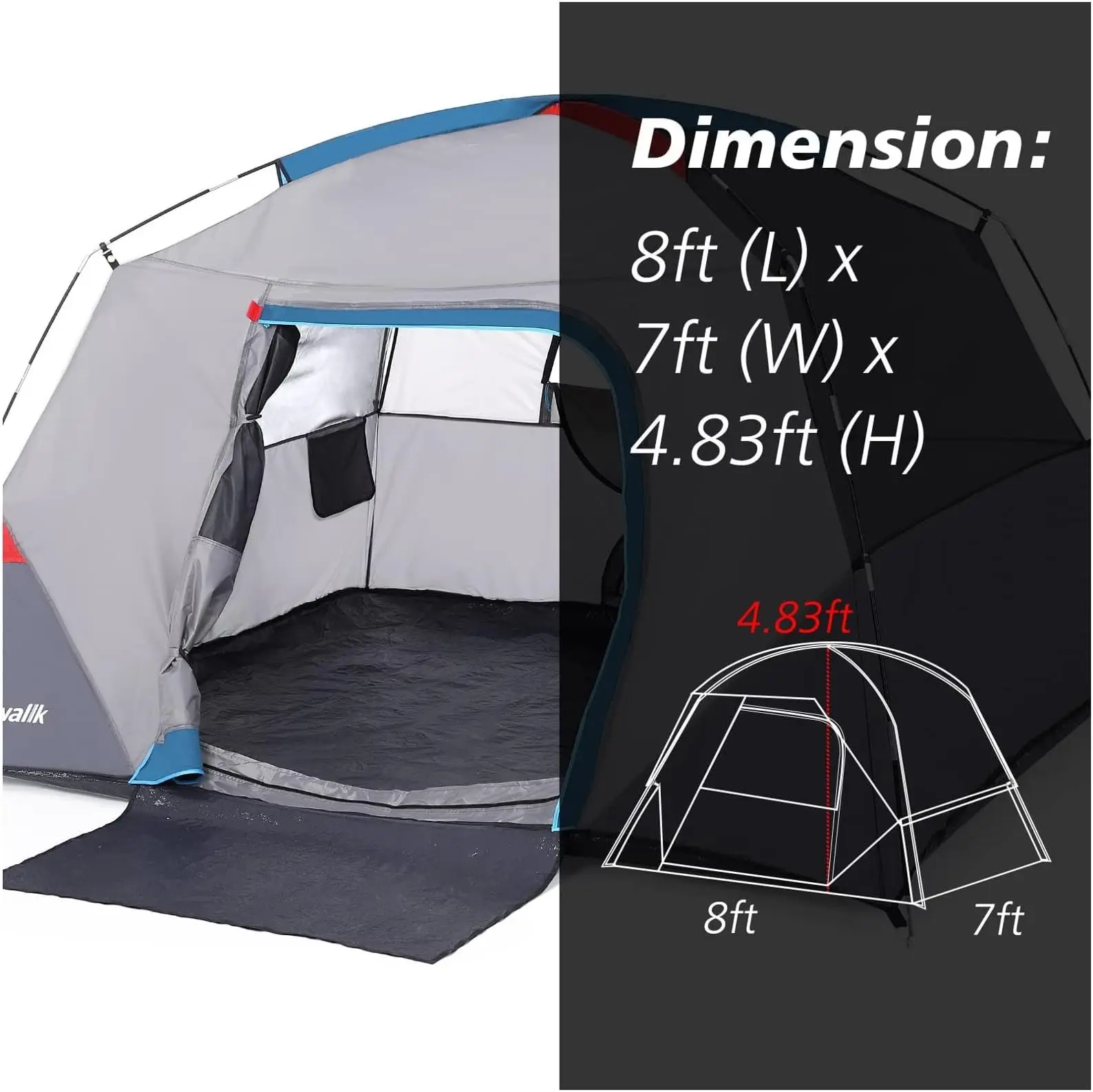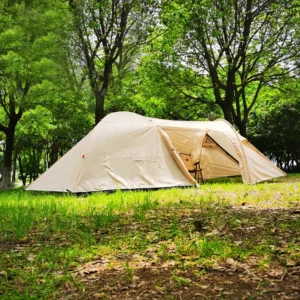Introduction: Why Waterproofing Matters in the Outdoors
When venturing into the great outdoors, few things can transform an exciting adventure into a miserable experience faster than being soaked to the bone. Waterproofing in outdoor gear isn’t merely a luxury feature—it’s a fundamental necessity that can make the difference between a memorable journey and a potentially dangerous situation.
Over the decades, waterproofing technology has evolved dramatically from the heavy, waxed canvas materials of the past to today’s sophisticated membranes and treatments like GORE-TEX, eVent, and advanced Durable Water Repellent (DWR) coatings. These innovations have revolutionized how we experience nature in challenging conditions.
The consequences of inadequate waterproofing extend far beyond mere discomfort:
- In cold environments, wet gear can lead to dangerous drops in body temperature
- Moisture can compromise the integrity and functionality of essential equipment
- Wet conditions affect mobility, increasing the risk of slips and falls
- Damp sleeping arrangements can prevent crucial rest and recovery
Throughout this article, we’ll explore the comprehensive benefits waterproofing offers across various gear categories—from clothing to tents—and how these advantages translate to enhanced safety, comfort, gear longevity, and versatility in your outdoor pursuits. Understanding the ultimate guide to waterproof gear for backpackers provides a solid foundation for appreciating these crucial protections.
The Science Behind Waterproofing Technologies
To fully appreciate the benefits of waterproof gear, it’s helpful to understand the technology that makes it possible. Let’s clarify some key terminology that often causes confusion:
- Waterproof: Completely prevents water penetration, even under pressure (like heavy rain or kneeling on wet ground)
- Water-resistant: Repels water to some degree but will eventually allow penetration during prolonged exposure
- Water-repellent: Causes water to bead and roll off the surface but offers limited protection in heavy precipitation
At the heart of modern waterproof gear lies the microporous membrane—a remarkable engineering achievement consisting of a thin material with billions of microscopic holes per square inch. These pores are strategically sized to be smaller than water droplets but larger than water vapor molecules, creating the perfect balance of protection and breathability.
The first line of defense in most waterproof gear is the Durable Water Repellent (DWR) treatment applied to the outer fabric. This coating causes water to bead up and roll off rather than saturating the material, preventing the “wetting out” phenomenon that compromises breathability.
Hydrostatic head ratings serve as a key indicator of waterproof performance, measuring how much water pressure a material can withstand before leaking:
- 5,000mm rating: Adequate for light rain and dry snow
- 10,000mm rating: Suitable for moderate rain and average conditions
- 20,000mm or higher: Delivers protection in heavy downpours and severe weather
Finding the perfect balance between waterproofing and breathability represents one of the greatest challenges in outdoor gear design, as increasing one property often diminishes the other. Understanding waterproof ratings in backpacking gear is essential for selecting equipment appropriate for your specific needs and activities.
Critical Safety Benefits: Beyond Mere Comfort
When discussing waterproof gear, many people focus on comfort, but the safety implications are equally significant and potentially life-saving. Hypothermia—a dangerous drop in body temperature—can develop rapidly in wet conditions, even when temperatures are well above freezing. When clothing becomes saturated, it loses up to 90% of its insulating properties, creating a perfect environment for rapid heat loss.
Water dramatically increases weight, creating dangerous situations in several ways. A cotton t-shirt can absorb nearly 27 times its weight in water, while hiking boots can gain several pounds when saturated. This extra weight leads to:
- Faster fatigue and increased calorie consumption
- Higher risk of falls and injuries, especially on technical terrain
- More difficult movement during emergency situations
In survival scenarios, maintaining shelter integrity becomes paramount. A waterproof tent or tarp creates a reliable space to stay dry, treat injuries, and prevent further deterioration of your condition. Proper waterproofing helps maintain visibility during storms or after river crossings when it’s critical to be seen by rescue personnel.
Evaporative cooling—the same process that helps you stay cool when sweating—becomes dangerous when uncontrolled. Wet clothing accelerates this cooling process exponentially, potentially dropping your core temperature to dangerous levels within minutes in windy conditions. Understanding whether 3000mm waterproofing is enough for your specific activity and conditions can be vital to preventing these dangerous situations.
Environmental hazards like stream crossings, unexpected snowfall, and heavy rain pose less risk when you have appropriate waterproof protection, allowing you to focus on navigation and safety rather than the discomfort of being wet.
Enhanced Comfort and Performance Benefits
When properly equipped with quality waterproof gear, your outdoor experience transforms dramatically through these comfort and performance advantages:
Temperature regulation becomes significantly easier when you eliminate the cooling effect of water against your skin. This allows your body’s natural thermoregulation to work efficiently, keeping you comfortable across a wider range of activities and weather conditions.
Wet fabrics create friction against skin, leading to painful chafing and blisters, particularly in sensitive areas. Waterproof outerwear and footwear prevent this friction, allowing for longer, more comfortable activity without the distraction of skin irritation.
Weight management is crucial for outdoor performance. Dry gear maintains its designed weight, while saturated non-waterproof alternatives can absorb pounds of water, dramatically increasing fatigue and decreasing mobility—particularly noticeable in footwear and backpacks.
The psychological boost of staying dry should never be underestimated. Confidence in your gear translates to better decision-making and a more positive mindset, even when conditions deteriorate around you.
Enhanced focus on the experience, rather than discomfort, allows you to appreciate your surroundings, take better photographs, make safer route decisions, and fully engage with your adventure.
Quality sleep is the foundation of outdoor performance, and nothing compromises rest like dampness in your sleeping system. A waterproof shelter with proper ventilation ensures the rejuvenating sleep necessary for multi-day adventures.
The materials used in modern waterproof gear balance protection with comfort features like stretch and breathability. Understanding the materials used in waterproof hiking gear helps you select options that maximize both protection and comfort for your specific activities.
Gear Longevity and Investment Protection
Quality outdoor gear represents a significant investment, and waterproofing plays a crucial role in protecting that investment over time. Water damage can severely compromise gear integrity through several mechanisms:
- Moisture accelerates the breakdown of natural fibers and can weaken synthetic materials
- Repeated wet/dry cycles create stress on seams, stitching, and fabric structures
- Water serves as a carrier for contaminants like dirt, salt, and oils that degrade materials
A strategic approach to waterproof gear delivers outstanding return on investment. While premium waterproof equipment may cost 30-50% more initially, it typically lasts 2-3 times longer than non-waterproof alternatives when properly maintained. Over a five-year period, high-quality waterproof gear often proves less expensive per use while delivering superior performance.
Beyond longevity, waterproofing provides:
- Reduced maintenance requirements and repair frequency
- Better retention of insulating properties in sleeping bags and insulated clothing
- Protection from UV degradation (many waterproof treatments include UV inhibitors)
- Prevention of mold and mildew growth that can permanently damage fabrics
Many waterproof membranes and DWR treatments can be refreshed or reapplied when performance diminishes, extending the functional lifespan of gear significantly. Maintaining waterproof gear with proper care ensures these protective qualities last throughout the life of your equipment, maximizing your investment while maintaining reliable performance.
Waterproofing Across Essential Outdoor Gear Types

Waterproof Jackets and Outerwear
Waterproof outerwear serves as your primary defense against precipitation and represents the most critical waterproof investment for most outdoor enthusiasts. Beyond basic rain protection, modern waterproof jackets offer:
- Core temperature regulation through strategic venting and breathable membranes
- Critical sealing points at cuffs, hems, and collar to prevent water ingress
- Adjustable features like storm hoods and flaps that adapt to changing conditions
- Activity-specific designs (skiing, climbing, hiking) with features tailored to movement patterns
Footwear Waterproofing Benefits
Wet feet create multiple problems that waterproof footwear directly addresses:
- Prevention of blisters caused by increased friction in wet conditions
- Maintenance of insulation properties critical for temperature regulation
- Protection from fungal infections that thrive in damp environments
- Enhanced traction by keeping water from degrading the footbed-to-shoe interface
Modern waterproof footwear employs either membrane “booties” that encase the foot or treated materials like leather with sealed seams. Each approach offers advantages for different activities and environments.
Backpacks and Storage Equipment
Waterproof packs and storage solutions provide crucial protection for:
- Electronic devices like phones, GPS units, and emergency communication tools
- Essential documents including maps, permits, and identification
- Insulation layers that become ineffective when wet
- Food supplies that can deteriorate when exposed to moisture
Properly waterproofed packs maintain their weight distribution characteristics even in rain, preventing the shifting loads that can lead to back strain or loss of balance on technical terrain.
Tents and Shelters
Waterproof shelters create a microenvironment critical for rest and recovery in the backcountry:
- Full-coverage rainflies prevent precipitation from reaching inner tent bodies
- Waterproof groundsheets stop ground moisture from seeping into sleeping areas
- Strategic ventilation prevents internal condensation while maintaining waterproof integrity
- Proper tensioning systems prevent fly contact with inner walls that could transfer moisture
For comprehensive protection in various environments, exploring essential waterproof gear for backpackers provides valuable insights into creating a complete system of waterproof protection.
Seasonal Considerations: Waterproofing Benefits Year-Round
Waterproof gear delivers distinct benefits across all seasons, adapting to the unique challenges each presents:
| Season | Primary Waterproofing Challenges | Key Benefits |
|---|---|---|
| Spring | Unpredictable rain showers, snowmelt, mud | Quick-drying gear prevents repeated soaking; mud resistance maintains traction |
| Summer | Sudden thunderstorms, high humidity | Lightweight protection from brief but intense rainfall; added UV protection |
| Fall | Extended rainfall periods, decreasing temperatures | Core warmth maintenance when temperatures drop; protection from persistent precipitation |
| Winter | Snow, sleet, freezing rain | Prevention of melting snow penetration; management of high sweat output during exertion |
In spring conditions, waterproof gear prevents the cycle of repeatedly getting soaked and partially drying that can plague outdoor activities during this volatile season. The ability to quickly recover from unexpected showers maintains comfort throughout changing conditions.
Summer demands a different balance, with breathability becoming equally important as waterproofing. Lightweight, packable waterproof layers provide insurance against afternoon thunderstorms without becoming burdensome during hot weather.
Fall brings extended periods of precipitation in many regions, making durable waterproofing essential for comfort during longer exposure. As temperatures drop, preventing moisture becomes increasingly important for maintaining safe body temperature.
Winter presents unique challenges where waterproofing must manage both external precipitation and internal moisture from exertion. The ultimate guide to weatherproof gear for backpacking offers detailed insights into selecting appropriate protection for each season’s specific challenges.
Maintaining Waterproof Performance: Maximizing the Benefits

To enjoy the full benefits of waterproof gear throughout its lifespan, proper maintenance is essential. Follow these key practices:
Clean gear according to manufacturer guidelines, avoiding harsh detergents that can damage waterproof treatments. Use specialized technical cleaners designed for waterproof fabrics at lukewarm temperatures (never hot wash).
Recognize when waterproofing needs renewal—water absorption rather than beading on the surface is the primary indicator. Most DWR treatments need reapplication after 15-20 washing cycles or one intensive season of use.
Apply fresh DWR treatments with spray-on or wash-in products appropriate for your specific gear type. Remember that different materials (nylon, polyester, leather) may require different treatment products.
Store waterproof gear properly—always clean and completely dry, away from direct sunlight, and without tight compression that can damage waterproof membranes.
Inspect and maintain seam tape and seals, which often fail before the main fabric. Seam grip products can extend the waterproof life of aging gear.
Understanding the essential design elements of waterproof tents helps you identify key features to maintain, ensuring your shelter remains protective throughout its life.
Lightweight Backpacking Tent, Ultralight Backpacking Tent, Waterproof Backpacking Tent
$391.05 Select options This product has multiple variants. The options may be chosen on the product pageHeavy Duty 4 Season Tent, Mountaineering Tent, Winter Camping Tent
$870.40 Select options This product has multiple variants. The options may be chosen on the product pageCompact Backpacking Tent, Lightweight Backpacking Tent, Waterproof Camping Tent
$335.52 Select options This product has multiple variants. The options may be chosen on the product pageUltralight Backpacking Tent, Ultralight Dome Tent, Winter Camping Tent
Price range: $369.63 through $370.07 Select options This product has multiple variants. The options may be chosen on the product pageCamping Tent with Vestibule, Waterproof Camping Tent
Price range: $407.89 through $479.48 Select options This product has multiple variants. The options may be chosen on the product pageHeavy Duty 4 Season Tent, Ultralight Freestanding Tent, Winter Camping Tent
$3,722.66 Select options This product has multiple variants. The options may be chosen on the product page
Waterproofing and Environmental Considerations
The outdoor industry has made significant strides toward more environmentally responsible waterproofing technologies in recent years. Traditional waterproofing often relied on perfluorochemicals (PFCs) that persist in the environment for decades and bioaccumulate in wildlife and humans.
Modern eco-friendly alternatives include:
- Silicon-based DWR treatments that achieve comparable water repellency without PFCs
- Plant-based waterproofing compounds derived from natural oils and waxes
- Tightly woven physical barriers that achieve water resistance through structure rather than chemical treatments
These innovations help reduce the environmental footprint of outdoor activities while maintaining the protection outdoor enthusiasts need. Additionally, durable waterproof gear contributes to sustainability by reducing the frequency of replacement, keeping more products out of landfills.
The performance gap between traditional and eco-friendly waterproofing continues to narrow as manufacturers invest in green chemistry innovations. Many waterproof backpacking tents now feature environmentally conscious waterproofing technologies without compromising on protection.
When Is Waterproofing Essential vs. Optional?
Not every outdoor situation demands the highest level of waterproofing. Consider these factors when determining your waterproofing needs:
For day hikes in dry climates with stable weather forecasts, water-resistant gear might provide sufficient protection while offering greater breathability. However, for multi-day backpacking trips where unexpected weather could create dangerous situations, comprehensive waterproofing becomes essential.
Environmental factors dramatically influence waterproofing requirements. Desert environments might prioritize sun protection over rain protection, while temperate rainforests demand the highest waterproof standards. Consider both the typical and extreme conditions for your destination.
When operating on a limited budget, prioritize waterproofing for:
1. Outer shell layers (jacket and pants)
2. Shelter systems (tent or tarp)
3. Sleep system protection (dry bags for sleeping bag)
4. Footwear
Water-resistant options might suffice for:
– Mid layers in moderately wet conditions
– Day packs for short outings
– Accessories with quick dry capabilities
For various situations and conditions, waterproof camping tents provide reliable shelter options with appropriate levels of protection for different environments.
Conclusion: Embracing the Elements with Proper Protection

Waterproofing in outdoor gear delivers far more than simple comfort—it provides essential protection that enhances safety, extends equipment life, and enables meaningful outdoor experiences in all conditions. From preventing dangerous hypothermia to ensuring restful sleep in a downpour, quality waterproof equipment serves as the foundation for successful adventures.
The benefits of waterproofing touch every aspect of outdoor experiences: maintaining core body temperature in challenging conditions, protecting crucial gear from damage, reducing weight fluctuations that impact performance, and creating the confidence to explore regardless of weather forecasts.
By understanding your specific needs and investing strategically in waterproof gear appropriate for your activities, you transform weather from an obstacle into simply another element of the outdoor experience. With proper protection, rain changes from a trip-ender to just another dimension of your adventure.
Whether you’re planning a summer backpacking trip with afternoon thunderstorms or a winter expedition in harsh conditions, options like 4-season winter 2-person tents, heavy-duty 4-season tents, or specialized winter camping tents provide the waterproof protection needed to embrace the elements rather than retreat from them.







